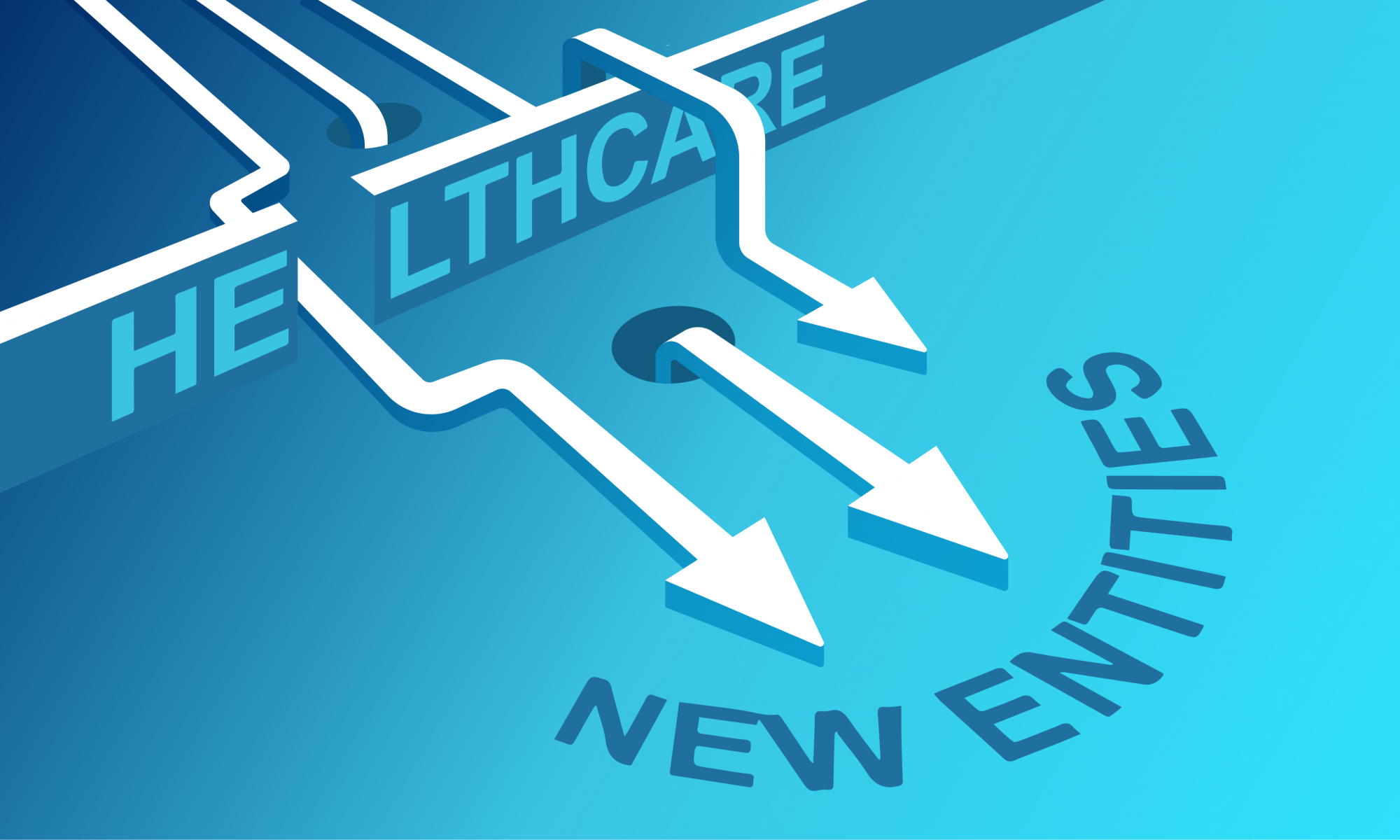The edges of the health ecosystem are teeming with companies, individuals and innovations that have the potential to disrupt traditional players within the healthcare industry. New entities are plotting to enter the health landscape for a variety of reasons, including:
- A desire to expand their value proposition and relationship with consumers into the realm of “health”
- A negative experience with their own health
- A vision for how disruptive technologies, transformative medicines or innovative drug therapies can be newly applied to improve health for others
The intentions of progressive, non-healthcare entities are earnest. But, when instigating innovations from the lens of an incumbent, where risk and reimbursement often impede such innovations, meaningful progress can be elusive.
Too often, new entrants and industry incumbents alike simply build on top of (or jury-rig) what already exists, rather than reimagining and re-architecting to achieve a more effective health ecosystem. This results in greater fragmentation and slower adoption of innovations throughout the health ecosystem. What is needed is an outside-the-box mentality – a clear perspective on what’s really broken, what can actually be improved and what has the staying power to not only disrupt, but also transform the health industry. This outside perspective is coming from retailers, transportation, banking and technology vendors, and – like it or not – it is moving rapidly from the fringes to the center of the healthcare industry.
Addressing Health from the Outside in
For consumers, the growing prevalence of apps and wearables serves as an entry point – from the outside in – to the health ecosystem. Companies who understand this front door approach to consumers of health, and who could position themselves to disrupt the system from the outside in, include:
- Amazon: The e-commerce giant is now in consumers’ homes with a virtual assistant that provides medical advice through WebMD.
- Lyft: The ride-sharing service is partnering with the Blue Cross and Blue Shield Association to improve health outcomes by helping commercially insured members get to medical appointments at no extra cost.
- Best Buy: Big box retailers and home appliance manufacturers, such as Best Buy, GE and Honeywell, are enabling in-home IoT infrastructures made up of smart refrigerators, ovens and thermostats that can monitor, assess and enable individuals to self-manage their environment and self-report health-related conditions.
Then there are companies with little recognition, at the fringes of the health ecosystem, blurring the lines between consumer and patient engagement:
- Life Time: Traditionally categorized as a fitness center, Life Time expanded its offerings first into the wellness space, and more recently, into the clinical space. To grow membership and engagement, Life Time began offering 5k races and spa services, among other amenities. Recognizing the need to look at an individual’s overall health status, the company recently took a leap into the clinical side of health and created on-site clinics. These clinics employ clinicians and registered dietitians who create wellness and care plans for members, essentially acting as a primary care provider.
- YMCA: Known as a community-based organization committed to empowering youth and promoting wellness, the YMCA is now helping one of the costliest populations – those living with diabetes. To tackle the condition that impacts roughly 30 million Americans, the YMCA established a diabetes prevention program to help members eat healthier, increase their physical activity and lose weight. The program helped those with a high risk of developing diabetes lose roughly 5 percent of their body weight, and has the potential to reduce the number of new cases of Type 2 diabetes by 58 percent.
- QuikTrip: Social determinants of health, such as access to healthy food, impact an individual’s ability not only to get healthy, but also to stay healthy. Today, a partnership among the national convenience and gasoline retailer QuikTrip and local farmers/food delivery systems enable healthy food to be safely transported and delivered to underserved, unhealthy communities – filling a gap in the health ecosystem.
In each of these examples of consumer-facing organizations approaching health from the outside in, data remains critical. After all, consumer companies have transformed their industry by using data to know what buyers want and when they want it. The outside-in tactics reach health consumers in ways they prefer – ways that seamlessly fit into their everyday lives. This type of precision engagement has the potential to advance the health industry faster and more effectively.
Recognizing the Halos Between the Inside and Outside Will Accelerate Change
While innovation at the fringes can help accelerate change, success is dependent upon both the inside and outside collectively recognizing, utilizing and coordinating the halos of one another’s capabilities. If Lyft drivers deliver consumers to their appointments, doctors must be available to see these individuals, or the system will falter.
The halo of Lyft is a payment system that allows someone to pay for a ride. QuikTrip’s halo is a delivery mechanism in place for moving food from one place to the other. Smart appliances need care management platforms that can capture and act on data collected from consumers’ home environments. By capitalizing on one another’s halo, both external disruptors and internal innovators benefit from offering better products, enhanced experiences and improved health outcomes.
A Wake-Up Call
Disruptors at the fringes of health may very well be the biggest threat to industry incumbents struggling to grasp their future role in healthcare. Hospitals and health systems, physicians, health plans, pharma companies and health technology and service vendors must recognize and engage new entrants operating at the fringes of the health ecosystem. Those who don’t will likely experience diminishing market opportunities and relevance.
Be sure to check out our other healthcare blogs leading up to HLTH 2018 on May 6-9th at the Aria Resort and Casino in Las Vegas. Latest blogs include:

